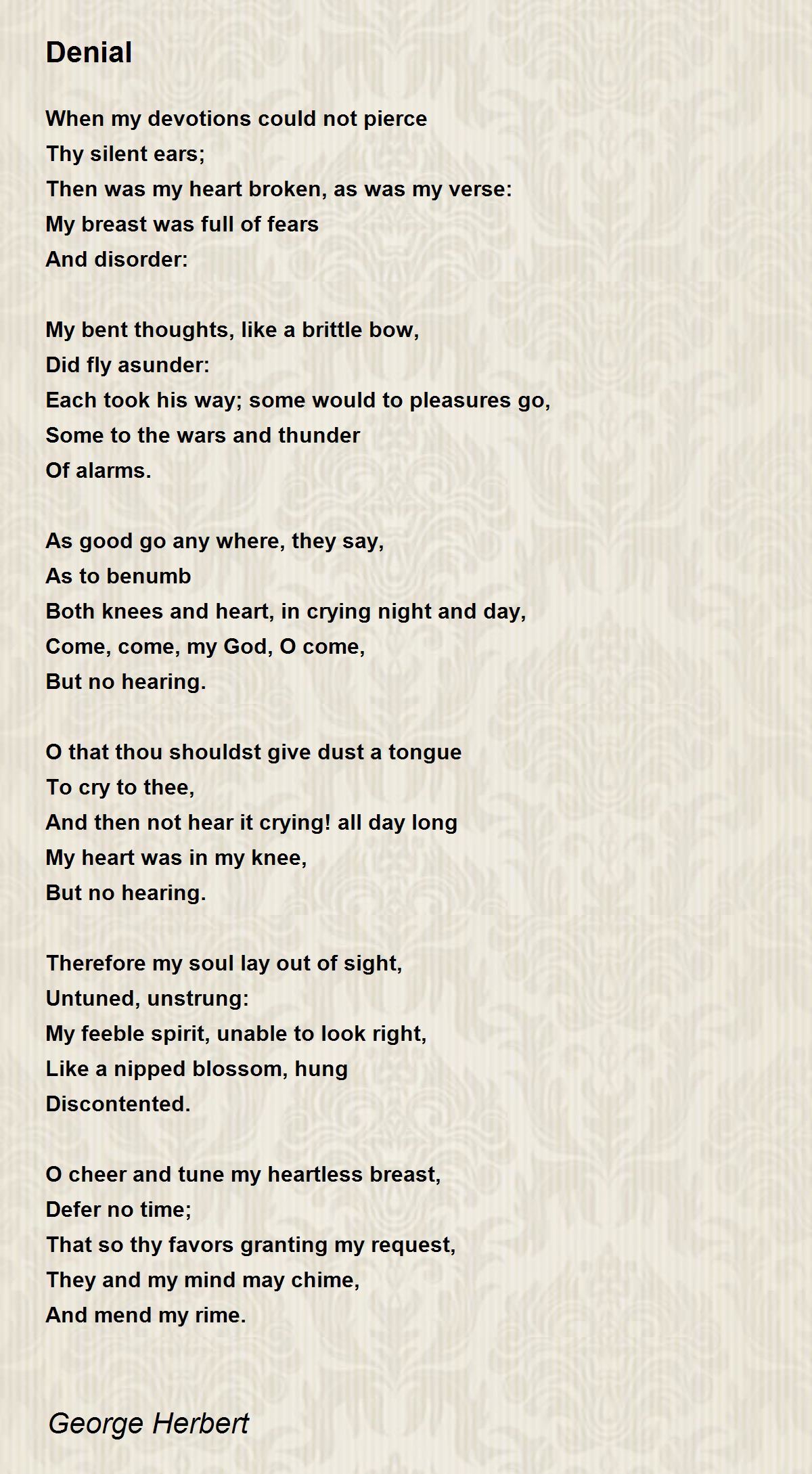
Herbert spent the rest of his life as rector in Bemerton near Salisbury. He resigned as orator in 1627, married Jane Danvers in 1629 and took holy orders in the Church of England in 1630. Two years after his college graduation, he was appointed reader in Rhetoric at Cambridge, and in 1620 he was elected public orator a post wherein Herbert was called upon to represent Cambridge at public occasions and that he described as “the finest place in the university.” Between 16, Herbert was elected as a representative to Parliament. Herbert received two degrees (a BA in 1613 and an MA in 1616) and was elected a major fellow of Trinity. Herbert left for Westminster School at age ten, and went on to become one of three to win scholarships to Trinity College, Cambridge. Herbert’s father died when he was three, leaving his mother with ten children, all of whom she was determined to educate and raise as loyal Anglicans. His mother, Magdalen Newport, held great patronage to distinguished literary figures such as John Donne, who dedicated his Holy Sonnets to her. It creates a flow in the way the poem sounds, also mimicking the wings which are represented visually.George Herbert was born on April 3, 1593, the fifth son of an eminent Welsh family. This specific meter structures the poem also auditorily. So the syllabic pattern of the poem goes: 10, 8, 6, 4, 2, 2, 4, 6, 8, 10 – in both stanzas.

there are ten syllables in each first and last line of the two stanzas.the middle four lines of each stanza have a specific number of syllables: four syllables in lines 4 and 7, and two syllables in lines 5 and 6.You will also notice that most lines stand on their own because of the punctuation that Herbert uses and capitalising the first letter of each line. This also underscores the imagery of the story: even with man’s fall from grace, God still keeps balance and order within the universe and eventually brings man back to Him. When we look at the rhyme scheme, Herbert uses ‘ababcdcd’ in both stanzas, which offers structure to the poem. As Herbert progresses from the first stanza to the second, the nature of man also progresses from God’s creation and the gifts provided therein to the fall of man and the required acceptance of Christ. This just means the words and lines are arranged on the form a visual image (in this case the wings of an angel to offer a thematic view of the human state).


Since I studied this poem at university, I can tell you it is written in a pattern poetry called ‘ascarmen figuration’, or ‘shaped verse’. Then shall the fall further the flight in me.Īffliction shall advance the flight in me. Lord, who createdst man in wealth and store,

And before you read this poem, just look at it! Look at how beautiful it is!


 0 kommentar(er)
0 kommentar(er)
